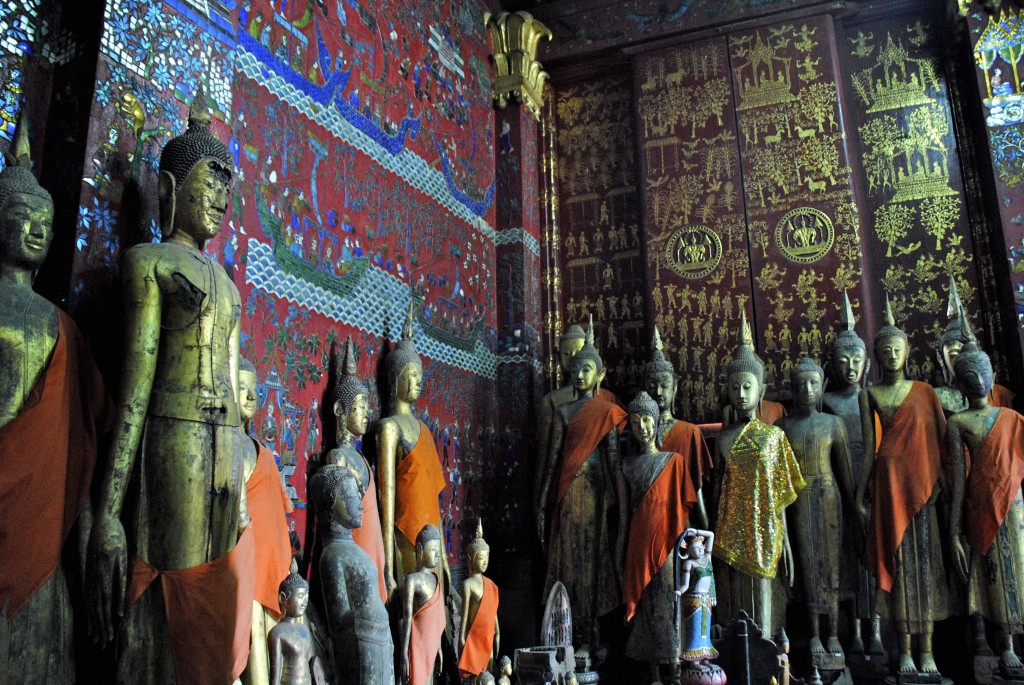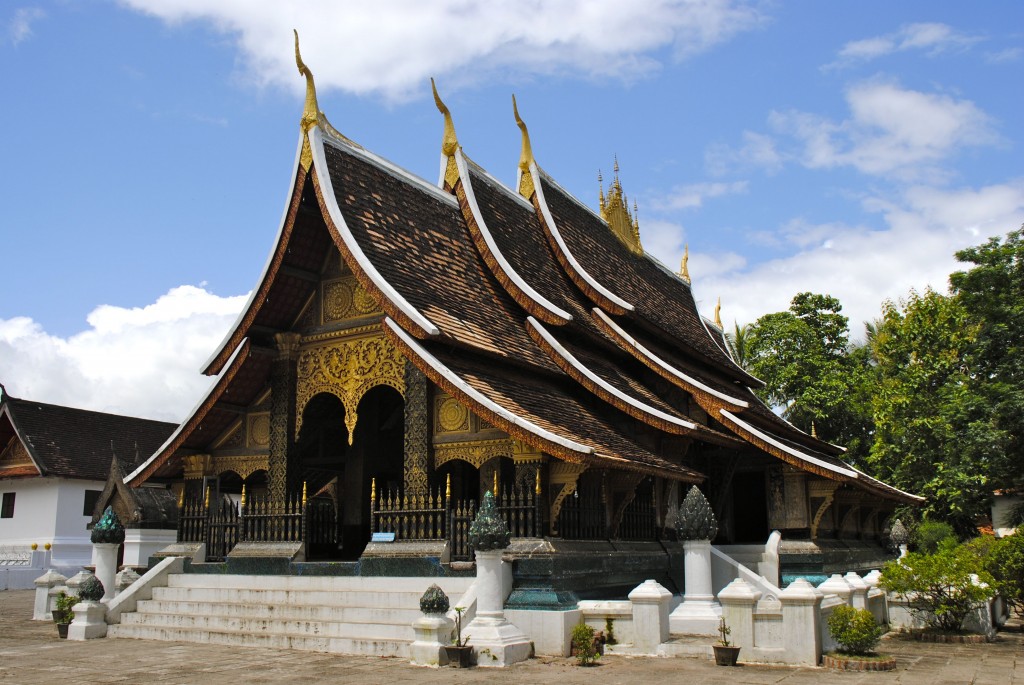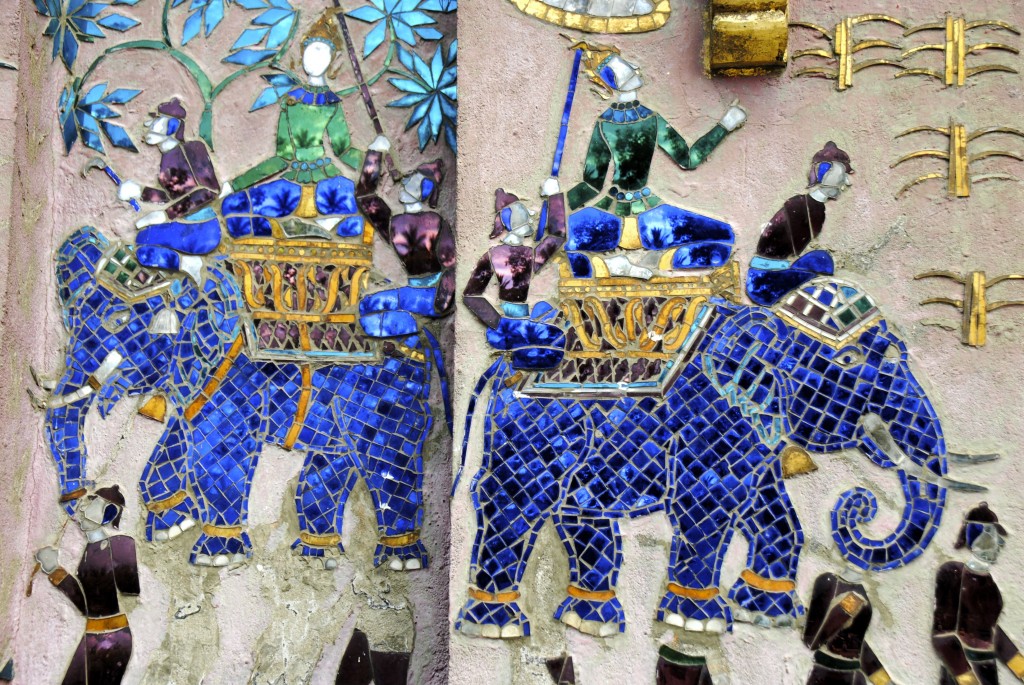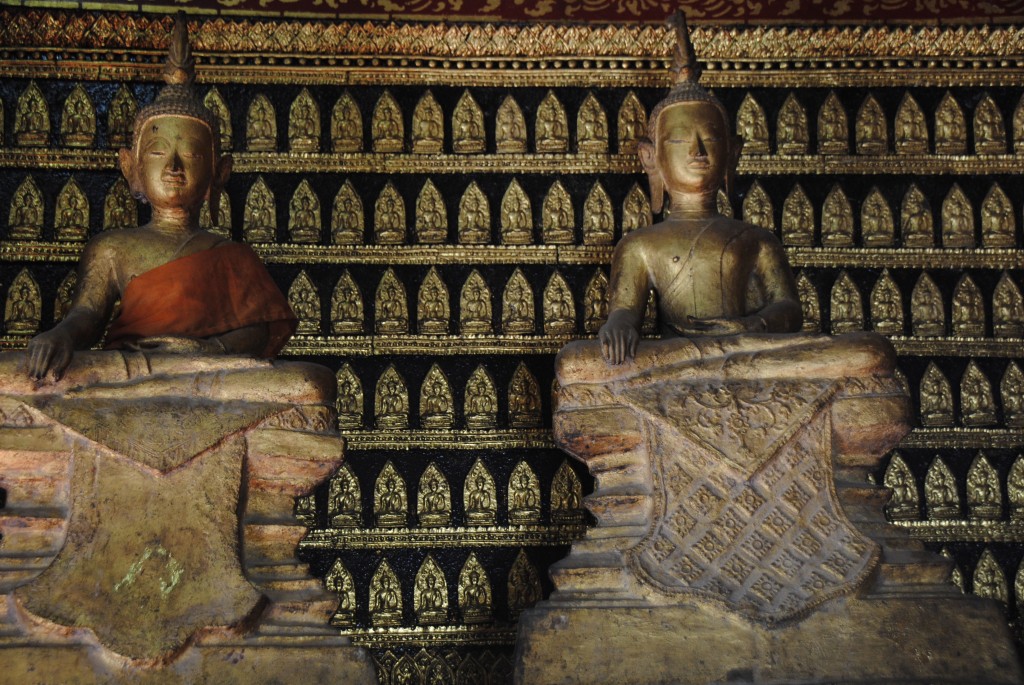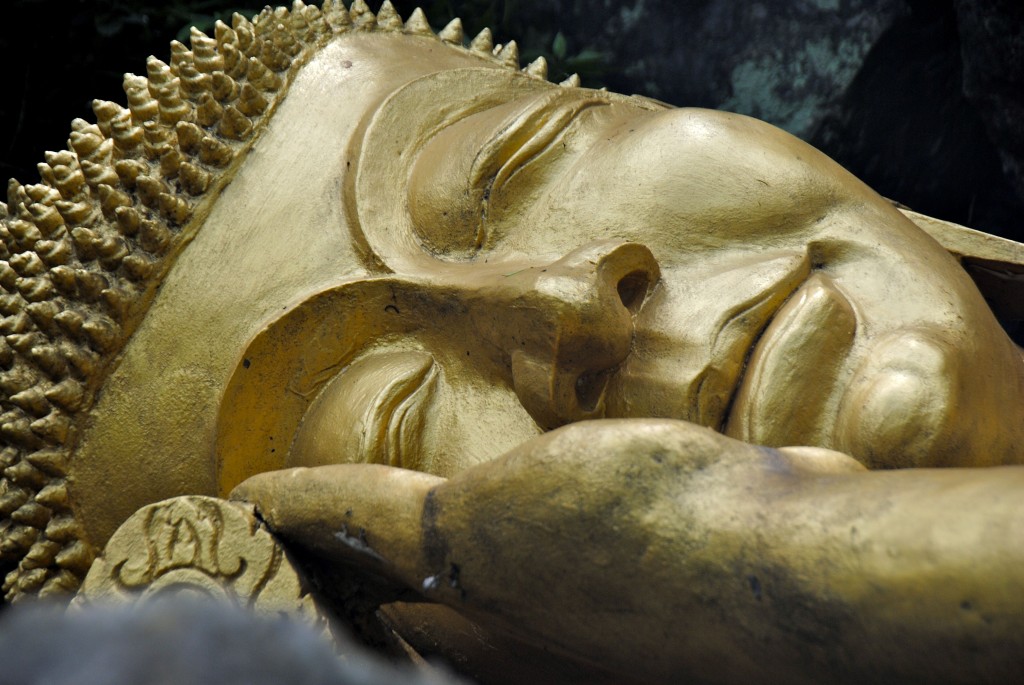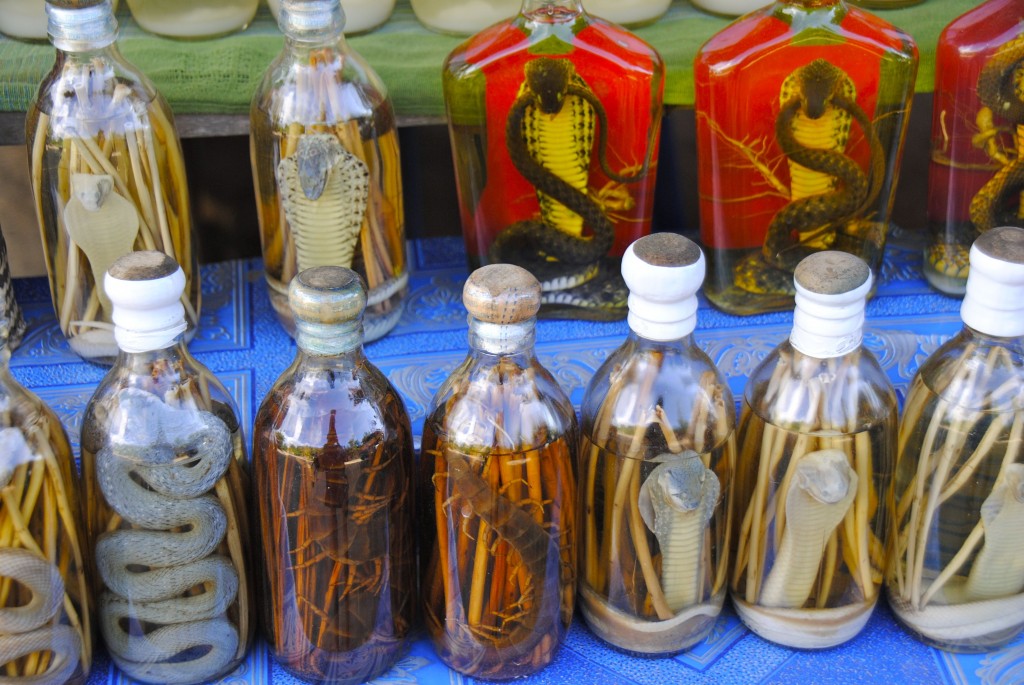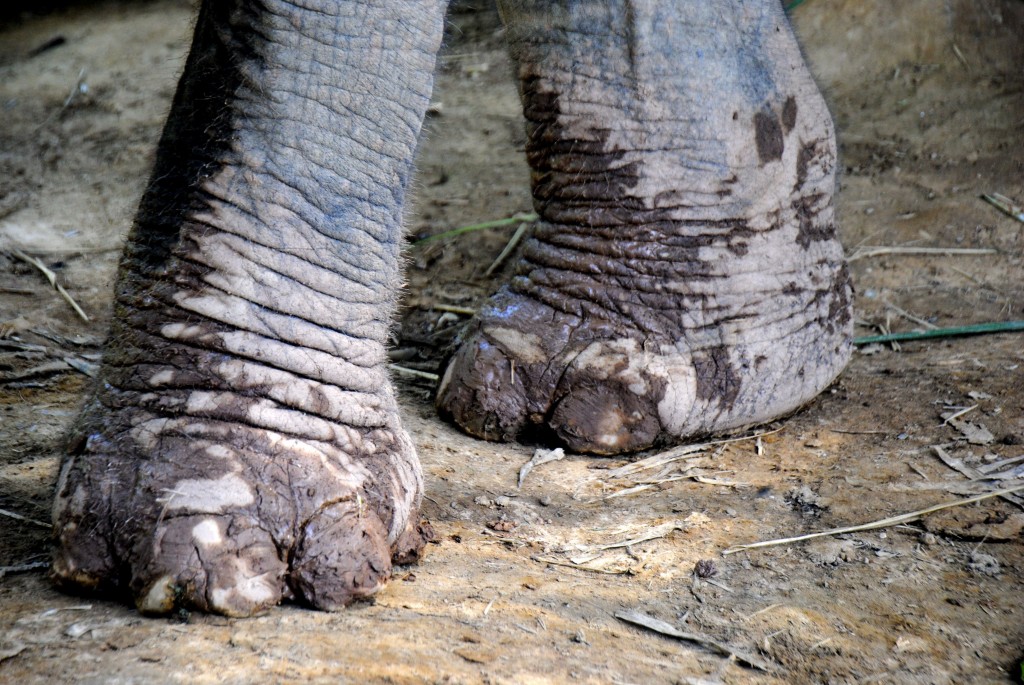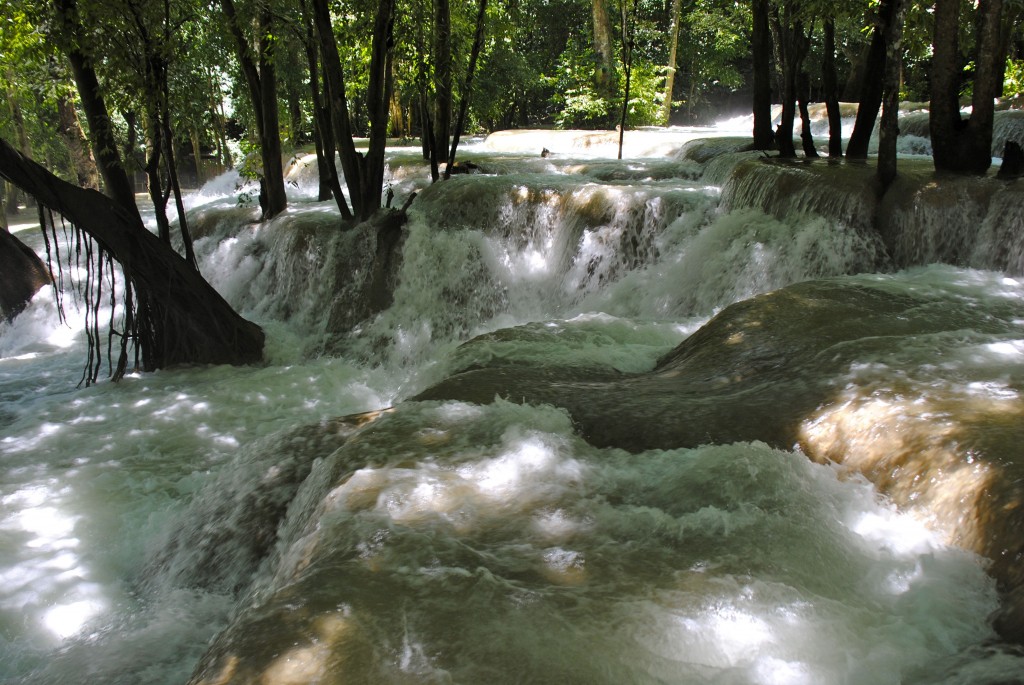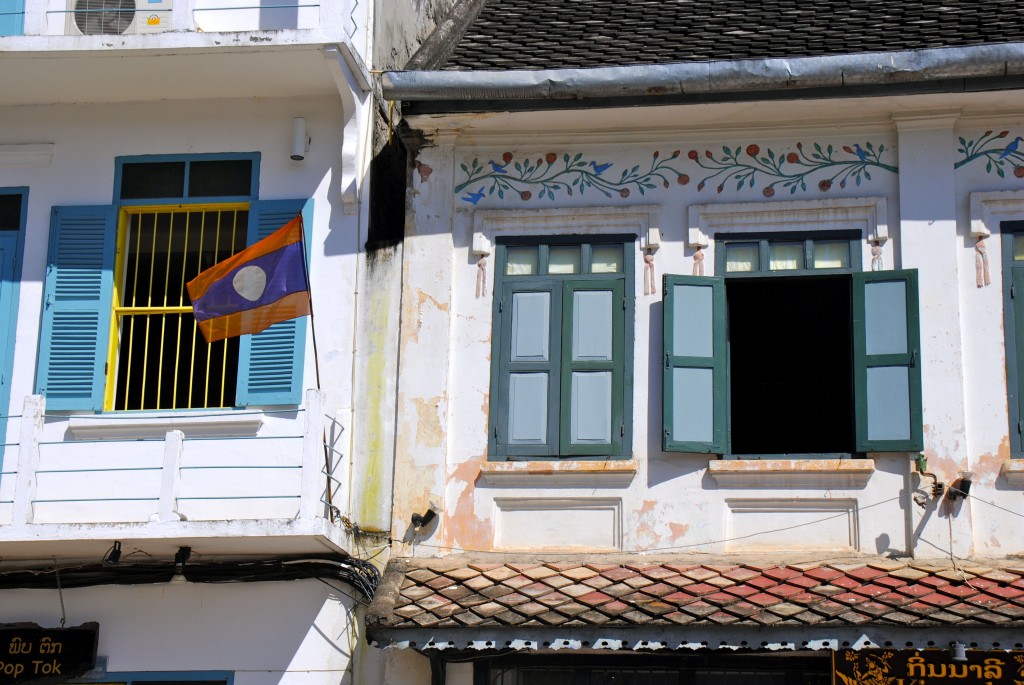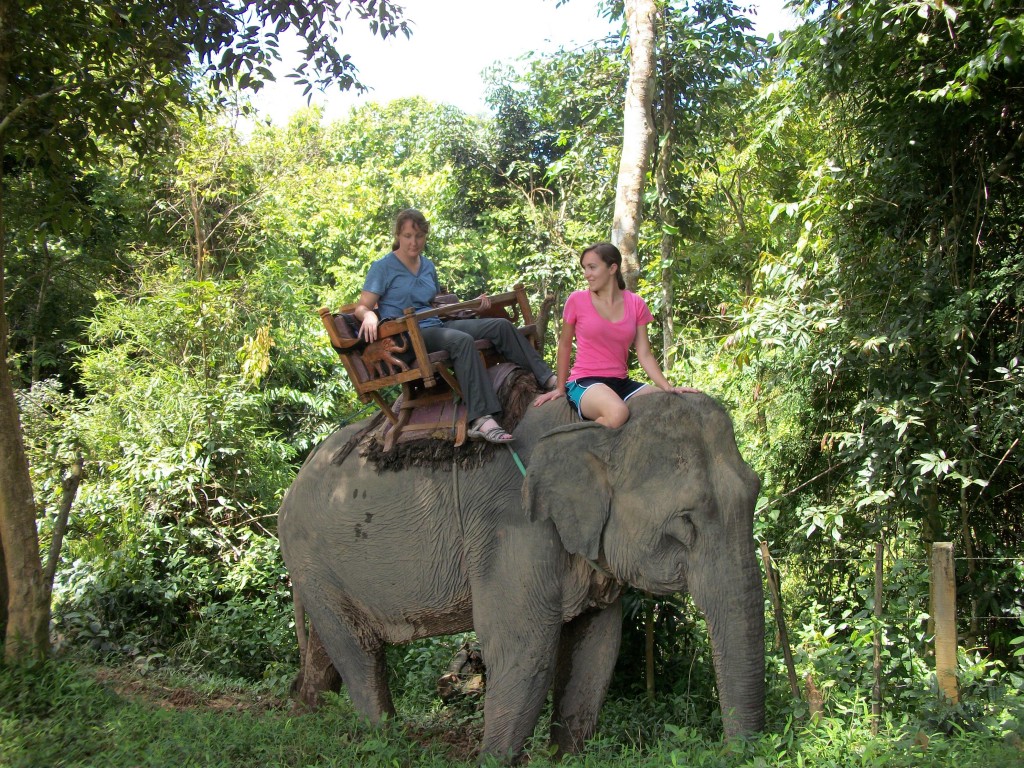After a week in Vientiane, packed with the Falang Wedding, final classes, and some goodbyes, my mom and I traveled north to Luang Prabang–Laos’ most popular tourist destination. Luang Prabang is a small city (about 100,000 people) north of Vientiane, nestled in mountains, and between to the Nam Khan and Mekong rivers. It’s a UNESCO World Heritage site with beautiful surrounding countryside and quaint colonial architecture, and lately seems to have arisen on the tourist track, thanks to a lot of publicity as a gorgeous and “little-known” place to see.

Although Luang Prabang can at times feel like “Lao Disney”–a perfectly manicured town catering to tourists–it’s still a wonderful place to visit, and its reputation as a charming town is warranted. The downtown peninsula between the rivers that makes up the main part of the touristed part of town is entirely walkable, with a main tourist drag plastered with tour agencies and an overwhelming night market. Every possible type of Lao handicraft (and probably some imports from other generic Southeast Asian craft factories) is laid out on the street every night under florescent lights.
Downtown in Luang Prabang there’s not a lot to “do.” Apart from shopping and dining, the town is largely about atmosphere: the tranquility of the streets, the temple spires rising above the low colonial buildings, stringy-looking chickens pecking around stoops where monks sweep leaves and sleepy street dogs nap. Though Vientiane is quiet for an Asian capital, downtown Luang Prabang makes it seem bustling in comparison. Laos’ best-preserved (and restored) temples are in Luang Prabang, and we spent the afternoon exploring Wat Xieng Thong and Mount Phousi.
If there is little to do in town, there is plenty to do in the surrounding countryside. Nature is something I miss when spending extended periods of time in Vientiane (except for the occasional faint glimpse of mountains in the different, and the plethora of geckos living around our house). One day, we took a tuk-tuk to the Pak Ou caves, which turned out to be a surprisingly long–1.5 hour–drive out of town. Luang Prabang receded into the dust and we started to wonder where we were going, but finally we got to the village where the caves were located. They turned out to be a somewhat disappointing handful of caverns with dusty Buddha statues (or maybe my standards for Buddha statues are just getting very high at this point), but the ride there and back, with an unannounced stop at a snake whiskey shop courtesy of our driver, was fairly entertaining.
The next day we left town again for the Elephant Village, a farm in the mountains that rescues former logging elephants. Though Laos was once the “Land of a Million Elephants,” wild elephants in the country are becoming increasingly rare. Many of the elephants in the country today work in the logging industry, which is an unforgiving job. We spent a half day at the farm, with a one hour elephant ride. Most of the time we rode on the back, while the mahout guided the elephant, but at the end we got a chance to ride on the elephant’s neck. This looked easy but was surprisingly challenging. As soon as I sat down, the elephant decided it didn’t need to obey anymore and started to peruse the bushes nearby for a snack. Once I finally got it moving, it was incredibly hard to hang on, with no handles but flapping ears, and its weight constantly shifting back and forth.






